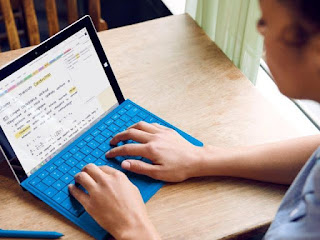How's this for irony: while it's the parent's job to protect their children, kids tend to know more about tech than mom and dad – including how to navigate online. Understandably, many parents feel helpless because of this “digital divide.” But common sense, smart software and parental controls can help protect the ones you love.It’s important for parents to be aware of what types of programs — for example, apps, social media, and games — their kids use, how much time kids are spending on devices, and who they're interacting with,” says Caroline Knorr, Senior Parenting Editor at Common Sense Media, a nonprofit organization dedicated to helping kids thrive in a world of media and technology. “Parents should also know how kids safeguard their privacy and conduct themselves online, and perhaps most importantly how kids feel about what they're doing online,” adds Knorr.

ka
Along with teaching our kids how to look out for red flags – such as predatory behavior, cyberbullying, and age-inappropriate content – parental controls can be set for some extra peace of mind. “Of course, when kids are younger parents should be in a more supervisory role, but as they get older we must move into a supportive role,” Knorr adds.
The following are a few ways to set parental controls – even if you’re not very tech-savvy.
Note: In this article, we aren’t covering third-party software like Net Nanny, nor are we discussing hardware-related tools (like special routers or Disney’s Circle device). Instead, we’re focusing on setting parental controls built into each of these platforms.
On A PC
With Windows 10, you can add younger users as part of the Family Features option, to help keep your kids safe online by filtering out some websites, allowing certain apps and games, setting time limits, and seeing where your kids are on a map based on where they signed into Windows (though it doesn’t work on all devices).
To set it up, go to account.microsoft.com/family, click “Add a Child,” and type in (or create) a Microsoft account or email address for each child in your home. You’ll now be able to set up appropriate website and app and game restrictions for their age, allow for shopping (or not), and review their recent activity.
If you have young children, you can also set up a picture password, where they can draw shapes instead off typing in a password.
On A Mac
It’s just as easy to set parental controls on a Mac, whether you share the same computer or not.
Using Parental Controls options, you can manage, monitor, and control the time your kids spend online, the websites they visit, and the people they chat with
To turn on parental controls, click on Apple menu > System Preferences, then click Parental Controls. (If you see the message “There are no user accounts to manage,” you can add a managed user by clicking the Add button.) Click the lock icon to unlock it, enter your name and password as administrator, and then select a user. Click Enable Parental Controls.
Now you’ve got some choices, such as preventing the child from using the built-in web camera, joining multiplayer games (in Game Center), or restricting a child’s contact with other people through Mail. You can choose what matters to you. Specify which apps the child can access, or disable the store altogether. You can allow only age-appropriate music, TV shows, movies and books. Set time limits for weekdays, weekends, and bedtime.
There are built-in tools to manage content and screen time.
On an iPhone, iPad, and iPod touch, you can access Restrictions to block or limit specific apps and features on your child’s device. To turn on Restrictions, tap Settings > General > Restrictions. Scroll down and tap Enable Restrictions. Create a Restrictions passcode. You will need this passcode any time you want to change your settings or to turn off Restrictions.
With Restrictions enabled, you might not see specific apps, features, or services.
Note: iOS devices do not support multiple users on a single device, therefore you’ll need to enable and disable Restrictions whenever you hand a device to a child, and get it back, respectively.
Android Devices
With Android, you can set up multiple users on a smartphone or tablet (running Android 5.0 or above) and then restrict a user account to block access to apps, games and features that might be inappropriate for your kids. From the top of any Home screen and most app screens, swipe down with two fingers, tap User (top right), and then Add user.
It can be tricky to set up multiple accounts on a Samsung Galaxy device, for some reason, so I’d opt for an app in this situation (such as SecureTeen Parental Control). You can also go to the Google Play Store, tap the three horizontal lines in the top left corner), then Settings, followed by Parental Controls. Now you can set content restrictions for apps and games, movies and TV shows, books, and music.
GAME CONSOLE
All major video game consoles let parents control what their kids are accessing, such as blocking inappropriate content based on the recommended age rating for each game. The Entertainment Software Rating Board (ESRB) will place a recommended age rating for all titles, such as “E” for “Everyone,” “E10+” for kids 10 and older, “T” for “Teen” (age 13+) and “M” for “Mature” (age 17+).
Whether your family has a PlayStation 4, Xbox One, Nintendo Switch or Nintendo Wii U, it’s quite easy to restrict access to games based on ESRB ratings, along with other things you might want to manage, such as time limits, online access, and more.
THIS REPORT BY ME (TECHNICAL SURAJ)









